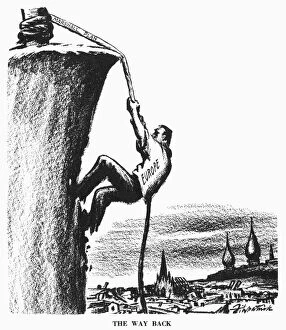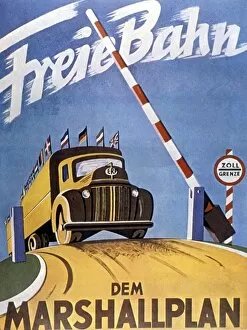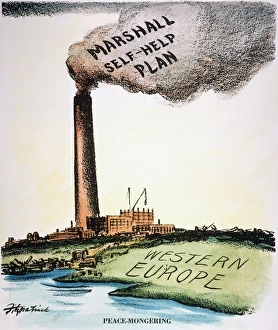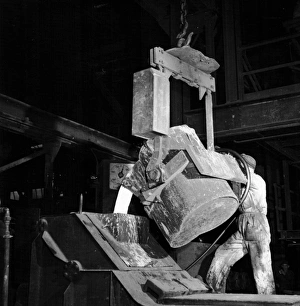Marshall Plan Collection
"The Marshall Plan: Rebuilding Europe's Hope and Prosperity" In 1947, the world was still reeling from the devastating aftermath of World War II
All Professionally Made to Order for Quick Shipping
"The Marshall Plan: Rebuilding Europe's Hope and Prosperity" In 1947, the world was still reeling from the devastating aftermath of World War II. Amidst this chaos, a beacon of hope emerged in the form of the Marshall Plan. Proposed by U. S. Secretary of State George C. Marshall, this ambitious European Recovery Program aimed to revive war-torn nations and pave the way for a brighter future. One striking depiction of this historic initiative can be found in D. R. Fitzpatrick's American cartoon titled "The Way Back. " With vivid illustrations, it captures the essence of the Marshall Plan as a path towards recovery and renewal. From Vienna to Linz, Austria became a hub for rejuvenation as wooden toys were meticulously crafted for export to America in 1952. This exemplified how local industries were revitalized through financial aid provided by the plan. Meanwhile, artists played their part too – an artist from Linz could be seen painting the Limberg Dam with utmost dedication between 1947 and 1951. This artistic endeavor symbolized not only physical reconstruction but also cultural revival within these war-ravaged regions. Healthcare advancements were another crucial aspect addressed by the Marshall Plan. In France during those years, radium treatment offered hope to individuals suffering from nasal infections – showcasing how medical progress was intertwined with rebuilding efforts. As life slowly returned to normalcy across Europe, heartwarming scenes unfolded at Asile St Leon in France where monks gathered for dinner amidst camaraderie and gratitude around c1947-1951. However, reminders of wartime struggles persisted; an eleven-year-old boy confined to an iron lung at Beaujon Hospital in Paris served as a poignant reminder that healing took time but progress was being made nonetheless during c1947-1951. Scenes like scuttled ships resting solemnly in Marseilles harbor between 1945-1949 highlighted both destruction and the need for reconstruction.

















